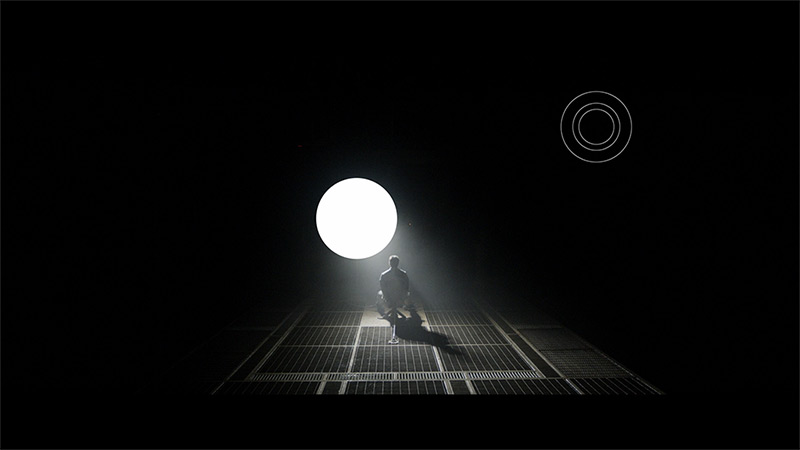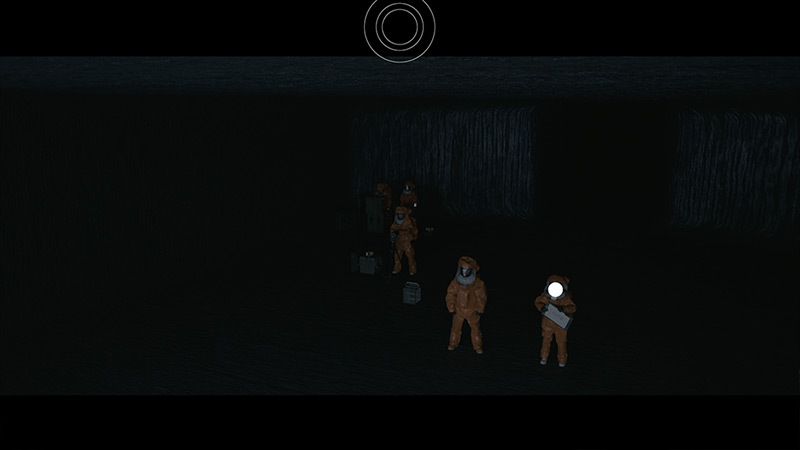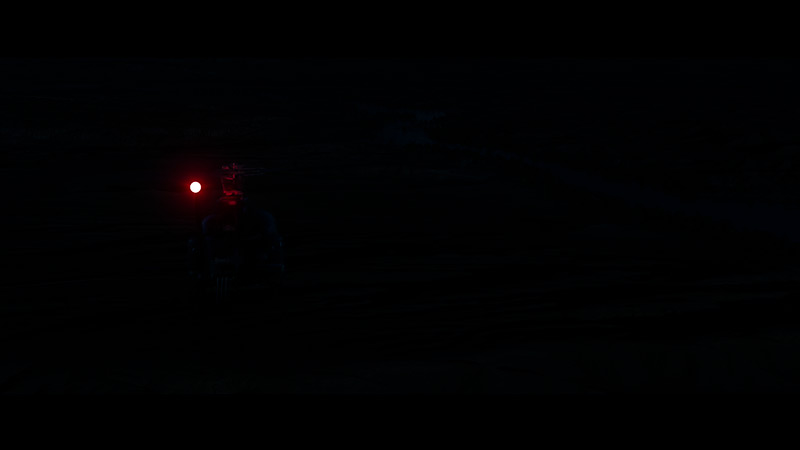- Matching (Score)
- Our verdict
- TV appearance
- Where to buy
- Contrast and black detail
- HDR effect quality
- Factory color reproduction
- Color reproduction after calibration
- Smoothness of tonal transitions
- Image scaling and smoothness of tonal transitions
- Blur and motion smoothness
- Console compatibility and gaming features
- Input lag
- Compatibility with PC
- Viewing angles
- TV efficiency during daytime
- TV features
- Playing files from USB
- Apps
- Sound

Complete the survey to find out the result
Panel technology: WRGB OLED Brand: LG Resolution: 3840x2160 Operating system: WebOS Model year: 2024
Our verdict
8.6
Overall rating
LG G4 is a strong contender for the best television of 2024. With a combination of OLED black and MLA technology, we will get an incredibly dynamic and detailed image that will surely captivate us entirely. LG G4 is also proof that TVs equipped with an OLED matrix supported by MLA technology are perfectly suitable for viewing in sunny rooms. The operating system, although not as open as the competition, allows for many possibilities. Its biggest advantage is the well-known remote control with a cursor, which makes controlling the unit one of the most convenient on the market (in our opinion). The color reproduction out of the box, while not at a high level, can be considered almost reference quality after calibration, providing a truly cinematic image. It is no coincidence that post-production studios choose TVs from this manufacturer. They are the only ones offering such deep intervention capabilities through 3D LUT calibration. It seems that the biggest (and perhaps only) drawback of this television is the tonal transitions, which, although far from ideal, cannot be said to detract from the viewing experience. The remedy is provided by the manufacturer itself, and enabling the "Smooth Gradation" function will eliminate the vast majority of stuttering. LG G4 also performs excellently when watching all kinds of sports or other dynamic scenes. The motion smoother is extremely advanced and allows adjustments to fluidity according to personal needs. With HDMI 2.1 ports boasting full functionality and the manufacturer's attention to detail, the tested television will find its place in many passionate gamers' homes. Every significant function works flawlessly, and the low input lag in every mode is very pleasing. In summary, LG G4 is an incredibly versatile television that allows for entertainment of excellent quality both at night and during the day.
Advantages
Phenomenal image fidelity to the director's intent
Reference color reproduction after calibration
Very high brightness in HDR materials
Remarkable compatibility with console and computer
The panel suppresses reflections very well
Perfect viewing angles
Disadvantages
Visible tonal transitions
Sound of the built-in audio system - could be better in this class of television
Movies and series in UHD quality
8.5
Classic TV, YouTube
9.1
Sports broadcasts (TV and apps)
9.0
Gaming on console
9.5
TV as a computer monitor
8.6
Matrix brightness
6.0
Utility functions
9.5
Apps
9.7
Sound quality
8.6
Complete the survey to find out what fits your preferences
TV appearance
HDMI inputs: 0 x HDMI 2.0, 4 x HDMI 2.1 (48Gbps) Outputs: Toslink (Optical audio), eARC (HDMI), ARC (HDMI) Network Interfaces: Wi-Fi 2.4GHz, Wi-Fi 5GHz, Ethernet (LAN) 100Mbps







Where to buy
No links
Contrast and black detail
10/10

Contrast between the black background and the bright spotlight illuminating Jack. Scene from the movie Oblivion (Universal Pictures).
Result
∞:1

Contrast between the glare on the chameleon's skin and the black near the edge of the screen below. Scene from the Spears&Munsil test disc.
Result
∞:1

Contrast between the reflection on the helmet and the black on the black film strip. Scene from the movie Arrival (Paramount Pictures).
Result
∞:1

Contrast between the actress's face and the black film strip at the top edge of the TV. Scene from the movie Gravity (Warner Bros. Pictures).
Result
∞:1

Contrast between the colorful balloon and the black slice between the falling objects. Scene from the Pioneer Kuro test disc (2008).
Result
∞:1
LG G4, thanks to its OLED panels produced for over 10 years, delivers perfect results in contrast, black levels, and detail reproduction in the darkest scenes. It is worth mentioning that the matrix itself has been equipped with MLA (Micro Lens Array) technology, which LG presented just a year ago at the launch of its predecessor. The use of an organic matrix not only allows for achieving deep blacks but also provides remarkable immersion and a three-dimensional effect in the image, which is hard to find even in the best Mini LED televisions. Such image quality is closely correlated with OLED matrix technology, as each pixel is controlled by an electric impulse rather than by blocking filters on the matrix. Therefore, to achieve black, the pixel is not activated at all. This is very well visible in test images, where the reflective lights produce high brightness while being perfectly separated from each other. The situation remains unchanged in challenging scenes from "The Revenant," where the television remarkably captured secondary and even tertiary details. Television Tests have shown that the black in LG OLED G4 is nearly perfect, which further enhances the sense of depth in high-contrast films. MLA technology in LG G4 not only improves brightness but also handles light reflections excellently, making the television perform well even in sunlit rooms. With high contrast and deep blacks, the LG OLED G4 test recorded an exceptionally high level of immersion, which particularly distinguishes this television among competing models.
Halo effect and black detail visibility:


HDR effect quality
7.8/10
Supported formats: HDR10, Dolby Vision, HLG Color gamut coverage: DCI P3: 98.3%, Bt.2020: 74.7%
Luminance measurements in HDR:

The measured point is the setting sun against a bright sky. Scene from the movie Life of Pi (20th Century Fox).
Result
1474 nit

The measured point is the moon against a dark, starry sky. Scene from the movie Life of Pi (20th Century Fox).
Result
1467 nit

The measured point is the flashlight on the rifle, which shines directly at the camera. Scene from the movie Gemini Man (Paramount Pictures).
Result
1403 nit

The measured point is the tail light of a helicopter flying at night. This is a very small light point, the essence of the HDR effect. Scene from the movie Sicario 2: Soldado (Lionsgate).
Result
1441 nit

The measured point is the sun visible directly between the clouds. The scene is very bright and should blind the viewer as in nature. Scene from the movie The Meg (Warner Bros. Pictures).
Result
850 nit
LG G4 guarantees an exceptionally vivid HDR effect, allowing the television to rank among the very best. The highest-end model from the manufacturer's 2024 portfolio, equipped with the second generation of micro-lens technology (MLA), achieved a maximum brightness of 1474 nits in real scenes. The only area where the Korean manufacturer's product may fall short compared to Mini LED backlit LCD TVs is during full-screen scenes with a lot of white. If we disregard the latter scenes, the average score would be even higher. It's also worth noting the scenes with very fine details, where each of them shone at full power, which is not so obvious in non-OLED televisions. The combination of such brightness and wide coverage of the DCI-P3 color gamut makes HDR materials more engaging than ever before.
Scene from the movie “Pan” (about 2800 nits)

Scene from the movie “Billy Lynn” (about 1100 nits)

As we can observe, LG G4 after calibration excellently conveys the director's intentions in each of the films. A very challenging scene from the film "Pan," mastered to a brightness of 2800 nits, poses no problems, and details such as the sun or nearby clouds have plenty of detail and are not overly brightened or (more importantly) darkened. The scene from "Billy Lynn," rich in both bright and dark details, has been presented almost perfectly, and the balance between the explosion of fireworks and deep black in the background appears extremely realistic. It is worth noting the colors themselves, as they are incredibly vibrant and lifelike, thanks to a DCI-P3 color coverage of 98%. And although the coverage of the BT.2020 palette is not as high as that of the aforementioned DCI, it is a matter to be addressed in the distant future, as currently, the vast majority of films are not made in this color space.
HDR luminance chart:
In difficult HDR scenes, the LG G4 television performs very well due to its high brightness and support for static metadata in film. As a result, the scene below is not overly darkened, yet it retains good detail in the highlights. The subtle loss of tonal transitions can only be observed in the background. With the LG G4 equipped with Dolby Vision, the television is able to reproduce material with dynamic metadata. This allows for slightly higher brightness and even more detail in the whites. The difference is not large due to the TV's significant capabilities, but it is clearly noticeable in challenging scenes like the one below. It should also be mentioned that such demanding scenes are not common in films.
Static HDR10

Dynamic: Dolby Vision

Factory color reproduction
8.4/10
The best factory mode in terms of color reproduction was "Filmmaker". This was the mode we used during our tests. Let's check what its characteristics looked like before the calibration process. Taking a closer look at the white balance, we can notice a significant dominance of red and green colors. The result was a warm-yellow shade of the image. This is the kind of characteristic we can usually observe in "Cinema", "Filmmaker" or similarly named counterparts. The effect of such color balance was clearly visible in both SDR and HDR content, which, after switching from "Standard" mode, were distinctly yellowed. Now let's move on to two charts that are responsible for brightness characteristics, and consequently, the contrast of the image. The first one (Gamma), representing materials with a standard color palette, performed decently. For most of the time, mid-tones and bright whites were reproduced very accurately, however, it noticeably lost the darkest details, which merged into a black blob. On the other hand, HDR materials, represented by the EOTF curve chart, exhibited a significant drop in contrast due to a strong increase in brightness. The colors themselves turned out to be a problem, as can be seen in the "ColorChecker" chart, as they were noticeably under-saturated.
Color reproduction after calibration
9.5/10
The manufacturer has been implementing extensive support for the calibration process in its LG televisions for many years. Therefore, we utilized 2- and 20-point grayscale adjustment as well as an advanced CMS (Color Management System) and got to work. As you can see, thanks to the conducted procedure, each parameter has significantly improved. Using the tools allowed for achieving extremely favorable effects, which include: studio color reproduction, recovery of details in dark areas of the image, appropriate brightness characteristics, and proper color saturation. Thus, we achieved maximum proximity to the reference image, which is what the film director saw on the preview monitor. It is worth noting that the LG G4 televisions are the only ones that allow for even deeper interference in image quality thanks to the ability to calibrate with 3D LUT matrices. This solution is, however, recommended only for post-production or graphic studios.


Smoothness of tonal transitions
6.2/10
The tonal transitions presented on the LG G4 are not among the top performers. Each scene played from a BluRay disc with 10-bit HDR exhibited noticeable inconsistencies in color transitions. This was particularly evident in the case of the film "The Green Knight," where issues related to posterization were especially noticeable. This effect could also be observed in films with moderate and high brightness, such as "The Martian" or "Kingsman," which is rarely encountered in televisions (especially of this class), surprising us. Such results suggest that in scenes with low luminance and a lot of black, this issue will be bothersome, even for an amateur.








Image scaling and smoothness of tonal transitions
8.2/10
Smooth transition function

Image without overscan on the SD signal

The tested television did not perform well with materials rich in tonal transitions, resulting in a strong posterization effect. However, there is a partial remedy for this issue. The manufacturer has equipped the LG G4 with a smoothing system called "Gentle Gradation," which we can apply at three levels: Low, Medium, and High. Each of these options guarantees a fairly high effectiveness of smoothing on bright colors, but low on darker ones. We recommend using primarily the first one, as the other two interfere with the director's intentions by removing film grain.
When watching lower-quality material, the efficiency of the television during upscaling is extremely important. The image from the tested television is sharp and clear. However, attention should be paid to the jagged edges of fine details and minor issues around figures, such as the creation of a halo effect, which occurs due to the sharpening imposed by the LG G4 even when we set the lowest value on the slider, which is 0. It is worth noting that this is a change compared to the LG G3, which did not impose such strong image sharpening, even when the corresponding slider was set to position 0.
Blur and motion smoothness
8.5/10
Maximum refresh rate of the panel: 144Hz
Film motion smoothing option: Yes
Blur reduction option: Yes
BFI function 60Hz: Yes, 60Hz (image flickers)
BFI function 120Hz: No
Brightness drop with BFI: 50%

The maximum refresh rate that we can set on the LG G4 is 144 Hz. Naturally, this is possible only when connecting the LG G4 television to a very powerful PC. Otherwise, we will operate at a maximum refresh rate of 120 Hz, which is recommended if we want to watch sports or materials with a lot of motion dynamics. For those who require high image fluidity, the manufacturer implemented a multi-stage motion smoother called "TrueMotion." It has been divided into two separate sliders that adjust the sharpness of moving images (De-Blur) and judder (De-Judder). Both sliders can be set in the range from 0 to 10, with each degree affecting the level of smoothing, so everyone can find their sweet spot.
The LG OLED G4 panel features an average response time of 0.78 ms (which directly results from our measurements), allowing for an extremely clear image that is unattainable for LCD televisions, which can have response times of up to several milliseconds. This is clearly visible in images from the "UFO Test," showing no trailing blur behind moving objects. Moreover, the LG OLED G4 test showed that the television offers the ability to precisely adjust the motion smoothing function, allowing users to choose the ideal level of image interpolation. We particularly appreciated this during fast actions in video games, where the LG G4 performed exceptionally well, minimizing any blurring. Thanks to OLED technology, this model eliminates the so-called ghosting, ensuring that the image remains clear even in the most dynamic sports or movie scenes.
Blur (native resolution, maximum refresh rate):



Blur (BFI function enabled):
Image flickers in this mode



An additional feature that allows maximizing image fluidity is "OLED Motion," which uses black frame insertion (BFI) between movie frames to "reset" the retina of the eye, thereby increasing image sharpness. Unfortunately, it is completely useless, as the image flickers strongly when it is enabled. Moreover, even if we decide to use this feature, the brightness of the LG G4 television decreases by half, and adjusting the De-Blur and De-Judder sliders becomes impossible.
Console compatibility and gaming features
10/10
ALLM: Yes
VRR: Yes
VRR range: 40 - 144Hz
Dolby Vision Game Mode: Yes
Correct implementation of HGIG: Yes
1080p@120Hz: Yes
1440p@120Hz: Yes
4K@120Hz: Yes
Game bar: Yes
G-Sync: Yes


The LG G4 TV supports all the features that make up the HDMI 2.1 standard. During tests, each one activated without the slightest problem, which allows us to consider the TV to be built for gaming. Its performance will certainly be appreciated by both console users and those connecting the LG G4 to a computer. It’s also worth mentioning the correct implementation of the HGIG mode (HDR Gaming Interest Group), which allows games mastered to brightness higher than the maximum luminance of the LG G4 TV to correctly map tones, keeping the game image true to the original.
An added bonus is the existence of a special GameBar, which we can call up at any moment to check game parameters, but most importantly, to change them quickly. More importantly, enabling VRR technology does not worsen contrast, which is very common in TVs with local dimming or Mini LED backlighting. Of course, this is thanks to the OLED panel itself, characterized by pixel self-emission. Out of editorial duty, we will only mention a slight grey flicker, which is somewhat of a norm after enabling VRR.
In summary, the LG G4, like practically all OLED TVs, is an ideal product for all kinds of games and online competitions. With full-fledged HDMI 2.1 ports with full bandwidth of 48 Gbit, features such as VRR, ALLM, G-Sync, FreeSync, or gameplay in HDR Dolby Vision will bring a lot of joy.



Input lag
10/10
Lag time LG G4 is at an incredibly low level in every scenario. Even the most avid gamers will surely appreciate the very low input lag at demanding 4K 120 Hz settings with HDR, which is just 5 ms. It is also worth noting that the lag at the same settings but with Dolby Vision HDR enabled remains unchanged, which is not so obvious with the competition. Therefore, it deserves the highest score and recommendation.
| SDR | HDR | Dolby Vision |
|---|---|---|
| 1080p60: 14 ms | 2160p60: 13 ms | 2160p60 DV: 13 ms |
| 1080p120: 5 ms | 2160p120: 5 ms | 2160p120 DV: 5 ms |
| 2160p60: 14 ms | ||
| 2160p120: 5 ms |

Compatibility with PC
8.6/10
Chroma 444 (maximum resolution and refresh rate): Yes
Font clarity: Very Good
Readability of dark text and shapes: Good
Input lag in PC mode (4K, maximum refresh rate): 5ms
Matrix subpixel arrangement: RWBG

LG G4 in combination with a PC works excellently, thanks to a very low latency of just 5 ms, which is practically instantaneous reaction between the mouse, the eye, and the screen. A crucial aspect during work on the screen is primarily the readability of the text, which is very good for the tested television.
The RWBG pixel arrangement has no significant impact on the display of fonts or letters, which is a significant advantage over Samsung's QD-OLED matrices. Users of both Windows-based PCs and macOS will surely be satisfied with the performance on the tested LG G4 screen.
Viewing angles
9.7/10
Brightness drop at an angle of 45 degrees: 9%
The undeniable advantage of OLED screens equipped with MLA technology is their efficiency in viewing conditions from various angles. The eye cannot notice any changes, regardless of the position from which we watch. This type of screen maintains consistent brightness, saturation, and shade of white, unlike LCD panels or OLEDs without micro-lens array (MLA) technology. The only panels that can match them are those produced by Samsung Displays, using quantum dots, i.e., QD-OLED.
TV efficiency during daytime
6/10


Matrix coating: Glare
Reflection suppression: Good
Black levels during daytime: Average
The glossy display coating of the LG G4, although it sounds like a negative, is actually the opposite. Thanks to it, the LG G4 TV maintains very high efficiency and effectively suppresses all reflections, "holding" them only at their source. It is also worth mentioning the quality of black during the day, which in the case of WRGB panels produced by LG Displays is exceptional. OLED MLA panels, despite having many advantages, are somewhat inferior in this case, but still better in the context of competition from Samsung, whose QD-OLED panels grow gray when exposed to light. The combination of brightness at around 500 nits and the glossy coating allows for using the TV during the day, unless the user has a living room with large glazing.
Matrix brightness
Average luminance SDR
LG 55 G4: 482 cd/m2
TV features
9.5/10
System operacyjny: WebOS
TV reception: DVB-T, DVB-T2, DVB-S, DVB-S2, DVB-C
Recording to USB (terrestrial TV): Yes
Recording programming: Yes
Picture in Picture (PiP): Yes
Screen mirroring (Windows Miracast): Yes
AirPlay: Yes
Voice search in native language: Yes
Ability to connect a keyboard and mouse: Yes
Possibility to connect Bluetooth headphones to the TV: Yes
Possibility to simultaneously use Bluetooth headphones and the TV speaker: Yes
Audio only mode: Yes
RF remote control (no need to aim at the screen): RF
Backlit remote control: No
Teletext: Yes




LG uses the well-known proprietary system WebOS, which has been around for many years. The system itself offers virtually all the most important applications, and those that are missing can be counted on one hand, such as CDA or KODI.
WebOS also includes a highly appreciated feature allowing operations to be performed using a cursor that appears when the remote control is moved. The convenience of this feature is invaluable when entering queries or passwords for portals. WebOS, like most systems, also supports functions such as screen mirroring, AirPlay, voice search in Polish, and the ability to connect headphones via Bluetooth. More down-to-earth, WebOS allows us to use headphones and the TV speaker LG G4 simultaneously, which will certainly be a great help for people with hearing impairments. Among the more interesting features that sports fans will particularly appreciate, there is the ability to activate an alert for an upcoming match, ensuring we never miss a broadcast. The home panel is also commendable, allowing control of all smart devices connected to the home network. For example, the completion of a laundry cycle will be signaled by a notification in the upper right corner.
In summary, the WebOS system, although less well-known and having certain limitations compared to Android TV, offers stable and fast operation and supports most functions that users may need. It is a solid solution for those looking for a simple and effective operating system in a television.
Playing files from USB
8.5/10

| Maximum photo resolution: | Supported photo formats: |
|---|---|
The default file player on the LG G4 definitely handles most photos well, although it is surprising that a few equally popular formats are missing. We can successfully play videos recorded in almost all popular formats, including Dolby Vision. The only codec that the G4 cannot play is H.266 VVC, although this is currently rather unused. However, attention should be paid to the supported photo formats, which are only two: JPEG and PNG. Users of Apple phones may feel disappointed by the lack of support for the HEIC format, which is the default format when taking photos. A remedy for this is to use the built-in AirPlay feature. We will also briefly mention the lack of support for TXT subtitles.
Apps
9.7/10


















Sound
8.6/10
8.6/10
Subjective sound quality
Dolby Digital Plus 7.1
Dolby True HD 7.1
Dolby Atmos in Dolby Digital Plus (JOC)
Dolby Atmos in Dolby True HD
DTS:X in DTS-HD MA
DTS-HD Master Audio
Audio quality assessment is always subjective. However, we must give LG G4 credit for maintaining a quite good level of sound clarity. The biggest drawback of the audio system built into the TV is the low bass range. However, it is essential to look at it from a different perspective — anyone deciding on this TV will likely own a home theater system. Key in this case will be the broad support for audio codecs, including DTS-HD Master Audio and Dolby Atmos.


